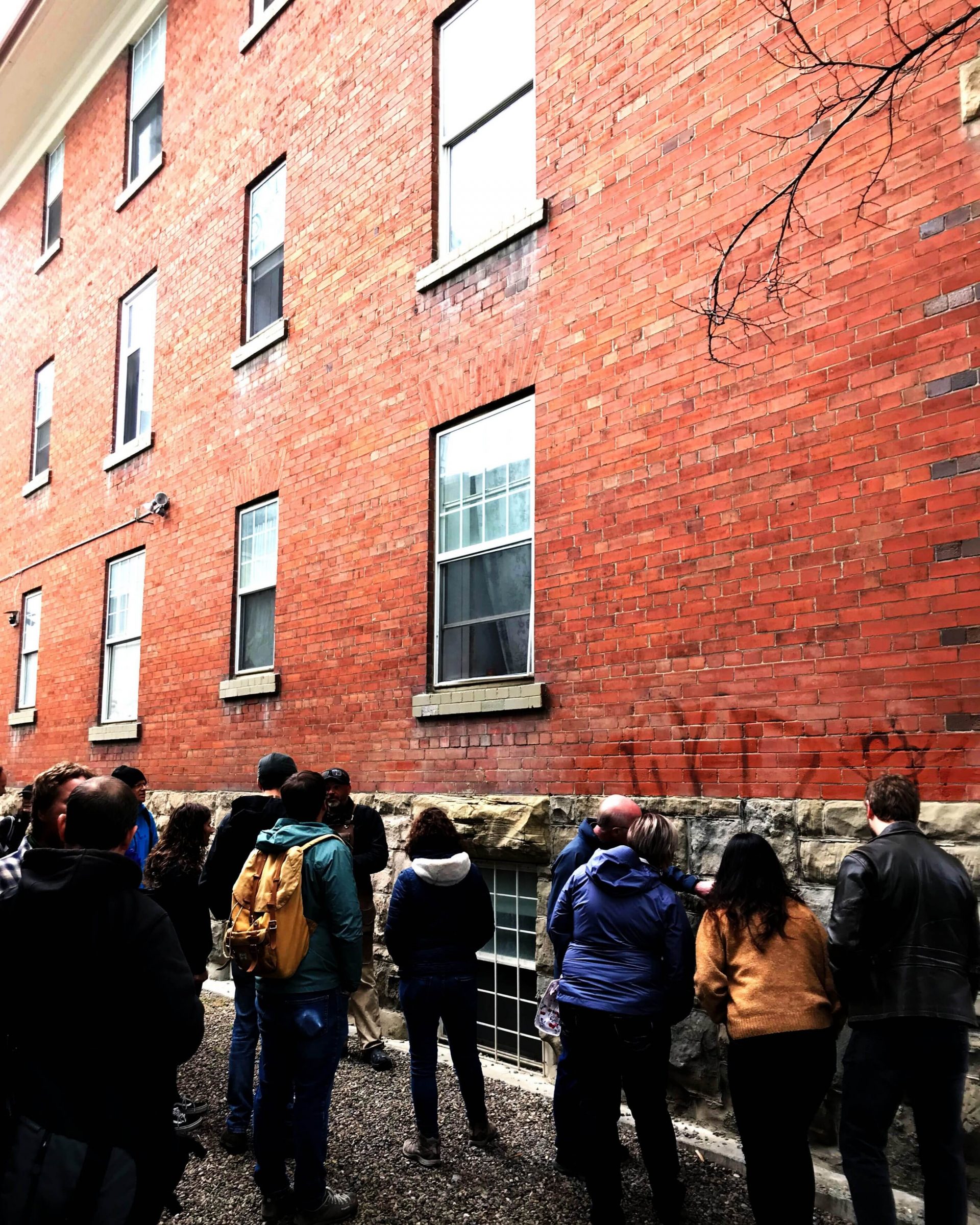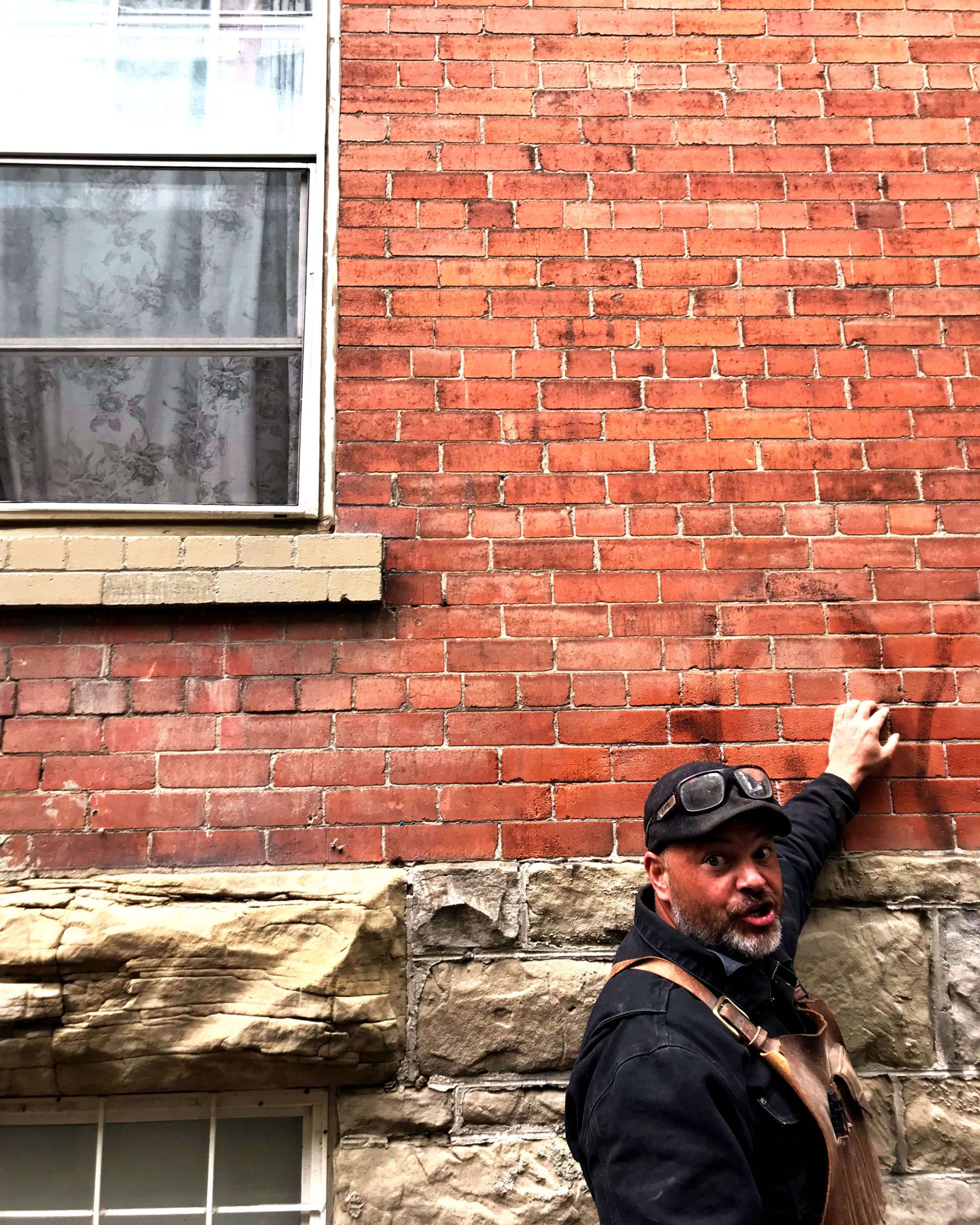- May 25, 2019
“People are realizing that they need to continue taking care of their buildings, and their neighbourhood.”
Does the name Sandstone City ring a bell? For a long time, Calgary was named after the prolific amounts of sandstone its quarries produced. These stones can be found all over the city, in places such as Historic City Hall and a number of downtown’s most iconic buildings.
As part of a city-wide knowledge share on masonry and heritage conservation-focused architecture, Lemay + Toker’s Heritage Architecture Team recently attended a hands-on masonry workshop organized by fellow heritage architect Patricia Glanville. Lemay + Toker’s own Mark Chambers, Jurgen Hartloper, Ellen Odegaard, and Chris Zahaluk were on the scene to deepen their understanding of one of heritage architecture’s most important building blocks.
Ellen Odegaard self-identifies as a brick nerd, and found the workshop emphasized the importance of proper care and attention when rehabilitating brick buildings. “A lot of the rehabilitation work we do locally is on brick buildings, mainly because it was so durable and commonly used. It’s for the same reason that we don’t have many wooden heritage buildings left,” she explains.
“Almost all material back then was sourced locally, and it’s really hard to find replacements for them today. The Paskapoo sandstone that many of Calgary’s old buildings are built from has gone extinct – it’s all been quarried or is inaccessible.” As such, one must get creative in order to find matching materials for heritage projects – sometimes requiring sourcing from as far as Poland and Spain.
Mark Chambers and team were invited on a walking tour of historic masonry case studies in the city, including the Haultain School – one of Calgary’s oldest existing sandstone structures. They witnessed the erection of a classic brick arch, assembled using lime mortar that was prepared onsite. Said arch was also a case study in geometry and its applications in making brick structures both functional and beautiful.
“It’s especially relevant now because we deal with more and more projects requiring heritage conservation. Preserving the look and feel of historic buildings requires extensive testing, and often that testing is destructive. It’s important to be mindful of that when undertaking projects like this.” Odegaard finishes.
As Lemay + Toker’s Heritage Coordinator, Chris Zahaluk has tackled several conservation and preservation-facing projects. He’s happy to see that Calgarians of all stripes are getting more involved in the protection of their history, and the sharing of specialized knowledge. “It was interesting to see the different disciplines in attendance – there were building owners, hobbyists, contractors and tradespeople, fellow architects… this type of expertise isn’t always readily available, so it’s nice to see people taking things into their own hands,” he explains.
“People are realizing that they need to continue taking care of their buildings, and their neighborhood. There’s a shift towards more routine maintenance and attention to preservation, but also larger scale rehabilitation projects incorporating or supporting a contemporary use.”
Zahaluk goes on to explain the importance of understanding what’s happening in Calgary’s architectural landscape. Understanding the context behind what techniques are used, the tools and solutions at one’s disposal, discovering new, potential and completed projects, all factor into new approaches to preserving history and ushering it into the future.

